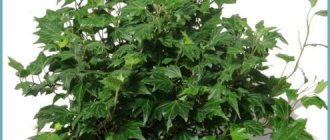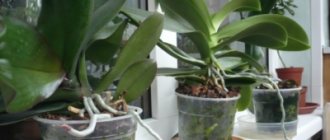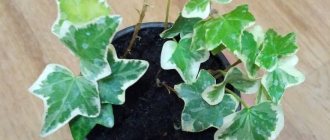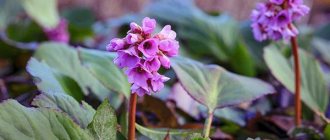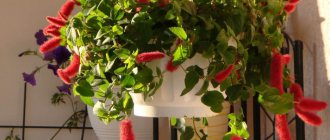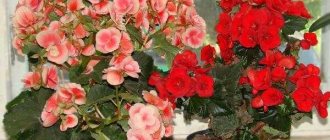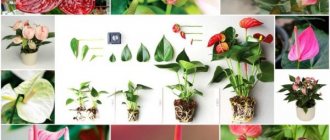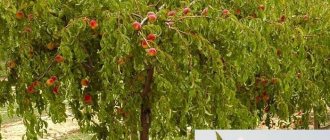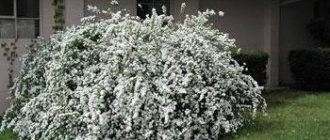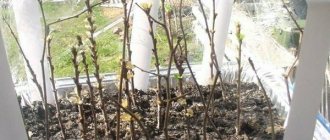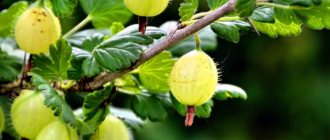Today, hanging plants are very popular among gardeners. Plants in hanging pots and pots decorate verandas, gazebos, terraces, and they are also grown indoors. Ampelous ones can decorate any area and make the room more comfortable. Flower growers and florist designers are especially fond of the unpretentious indoor evergreen ivy. Thanks to its hanging stems covered with decorative leaves, the plant is used to decorate any interior.
Description
Common indoor ivy (chedera) is a green vine that belongs to the Araliaceae family.
Usually lives in shady and humid subtropical forests of Europe, Asia and Africa. The plant has small adventitious roots, thanks to which it wraps around tree trunks, sometimes rising to a height of up to 30 meters. These roots provide additional nutrition for the entire bush. The presence of adventitious roots makes it possible to use indoor ivy in landscape design. According to popular belief, hedera is considered one of the most controversial plants. There are both positive and negative superstitions regarding this plant.
Thus, there is an opinion that indoor ivy brings happiness to its owners. This plant has calming properties, so it is recommended to purchase it for families with hyperactive children.
In some countries, ivy is believed to have a beneficial effect on romantic relationships. If an unmarried girl grows this plant, her chances of marriage will increase. For married women, ivy brings fidelity and great love in marriage. At the same time, in other countries they say that ivy climbing along the walls steals the happiness of an unmarried girl, and brings grief to a married lady and drives her husband out of the house.
Some are sure that ivy takes energy from its owner and depresses the functioning of the human nervous system.
On the other hand, there is an opinion that indoor ivy is capable of neutralizing negative energy and cleanses the surrounding space of negativity.
Each person has the right to decide for himself which option to believe, and whether he should grow ivy in his home.
Description of common ivy
First of all, we will describe the common ivy flower, analyzing its species properties, such as its natural habitat and natural preferences for growing conditions. So, wild ivy is found in southern Europe and northern Africa, although domesticated varieties are cultivated throughout the world.
Like most other ivy, the common variety is an evergreen climbing plant, the shoots of which gradually become covered with bark. The plant can be recognized by the leaves of common ivy, which are either whole or divided into 3 and 5 lobes.
The glossy surface reflects light, which will add catchiness and visibility to the plant. The natural structure of ivy arranges the leaves in such a way that the leaves are lined with a kind of carpet, since the leaf plates do not creep on each other.
This picture looks especially interesting if the leaves have contrasting stripes or borders. Common ivy cannot boast of rich flowering; the buds are small, faded, green-yellow tones. However, the beautiful foliage completely compensates for the inconspicuous flowering.
The plant masters virtually any surface, even steep ones, thanks to adventitious roots that help climb pipes, walls or slopes. This property is very useful if you are faced with the task of quickly and efficiently decorating, say, the facade of a building.
In order for the ivy to grow in the correct manner, it will require several support slats or other supports.
Types and varieties
Common or English ivy (Hedera helix)
Common or English ivy (Hedera helix)
The root system is branched, some parts of the root are in the air and are used by the plant for attachment to walls, trees or other vertical planes. The leaves of most varieties are green, however, on some varieties you can see white specks or edging around the perimeter of the leaf. Under natural conditions, the leaves can reach a size of 20 cm, but when grown indoors, on the contrary, they grow very small. When flowering, it forms inconspicuous flowers that produce small inedible berries.
Popular varieties of heder:
- Buttercup - feathery leaves, some of which are yellow.
- White Night - unusual white leaves with green edges.
- Eve is a miniature bush with green foliage, decorated with white edging.
- Jubilee - has spotted leaves.
- Glacier - green leaves with silver spots and white edges.
- Peppermint Hummingbird - Yellow spots can be seen on the green leaves.
Colchis ivy (Hedera colchica)
Colchis ivy (Hedera colchica)
The creeping bush rises to a height of 23-30 meters. Dense leathery leaves, colored green, have a glossy upper part. The lower part has a terry surface. The leaves grow up to 20 cm in length and 15-17 cm in width. The leaves of this type of ivy, when rubbed, emit a nutmeg scent.
When flowering, it forms inconspicuous flowers and spherical dark fruits. For normal growth and development, Colchis ivy requires fertile soil and shade.
Pastukhov's ivy (Hedera pastuchovii Woronow)
Pastukhov's ivy (Hedera pastuchovii Woronow)
A tall thin bush of light brown color with sparse vines. The leaves are thin, up to 10 centimeters long and up to 6 centimeters wide. Has no smell.
The inflorescence is a small umbrella containing about 20 flowers. The entire inflorescence is densely covered with hairs.
Canary ivy (Hedera canariensis)
Canary ivy (Hedera canariensis)
Ivy vines naturally grow up to 30 meters in height, or creep along the soil. New stems have a light greenish tint, sometimes stems with reddish or purple tints are found. With age, the leaves of the plant become gray in color. The leaf blades are wide, from 5 cm to 20 cm, dark green with white markings, glossy and slightly leathery, with 1-5 lobes. The flowers are greenish, the berries become round and black when ripe.
Wax ivy (Hoya)
Wax ivy (Hoya)
A liana whose leaves have a waxy coating. Its spectacular appearance has allowed wax ivy to become one of the favorite plants of gardeners: it is often chosen for landscaping at home. At home, the vine reaches a length of only 5–6 meters. Young shoots of brown color do not have foliage. Over time, the shoots turn green and become covered with leaves and aerial roots. Unlike many other types of ivy, when flowering, hoya forms beautiful inflorescences, combining up to 50 flowers with 5 petals.
Popular varieties of hoya:
- Dentata variegata - has leaves whose size reaches 15 cm. The leaves are painted in light green tones and framed with a cream-colored edging.
- Sulfur heard – this variety of ivy grows very quickly and has very large green-yellow leaves. Relatively resistant to frost. Large leaves are oval and heart-shaped, with jagged edges.
- Arborescens is an unpretentious evergreen vine used to cover horizontal surfaces. Looks like a green carpet.
Fatshedera ivy (Fatshedera)
Fatshedera ivy (Fatshedera)
A liana of the Araliaceae family, a hybrid of ivy and shrub “Fatsia japonica” with petiolate palm-shaped leaves from 8 to 25 cm long.
Botanical description
The houseplant ivy is most often represented by the species common ivy (Hedera helix) with a climbing stem and dense brushes of aerial roots on the underside of the stem, with the help of which the hedera ivy is attached to its support. The leaves of this species are alternate, simple, shiny, leathery, lobed, dark green with lighter veins, but there are also variegated forms. An ivy leaf can have from three to seven lobes. Small, greenish-yellow flowers are collected in umbellate, corymbose or racemose inflorescences, but you will not see them - ivy does not bloom at home, so you do not have to collect ivy seeds.
The indoor ivy flower has more than a hundred forms, which differ in size, leaf shape and color.
- Phalaenopsis: how to water, fertilize and replant
Features of cultivation
Common ivy is a hardy plant that does not require special growing conditions.
Soil selection
Ivy is absolutely unpretentious and grows on any soil, except clay, because it slows down the flow of oxygen to the roots. The best option for growing the plant is nutrient-rich, light soil. When using ready-made soil mixtures for growing ornamental plants, you should add any leavening agent, for example, sand, perlite or peat.
To prepare an earthen mixture yourself, you need to take coarse river sand, leafy greens and peat in equal proportions and twice as much turf soil.
Lighting
Ivy varieties with variegated leaves are grown on the sunny side, but the leaves should not be exposed to direct sunlight: the light should be diffused.
For plants with dark green foliage, it is better to choose a place in partial shade, for example, in the back of the room or on windows with a north orientation.
Temperature and humidity
The first two years the ivy develops very slowly. Therefore, it is recommended to plant the plant in an open place only in the spring so that it can grow stronger in a warm room.
An adult plant tolerates temperature changes well. In warm weather, ivy will feel most comfortable at temperatures from 18 to 25 degrees, and in winter from 12 to 15 degrees.
When growing outdoors, be sure to choose cold-resistant species.
Since ivy loves moisture, it is necessary to control the air humidity. The liana must be regularly moistened with a sprayer, especially during the heating season.
Fertilizers and fertilizers
To speed up plant growth in spring and summer, ivy needs to be fed once every two weeks. For these purposes, it is recommended to use ready-made preparations for decorative foliage plants. In winter, ivy cannot be fertilized.
Watering
Hedera requires abundant watering, especially during intensive growth. Under no circumstances should the soil be allowed to dry out. The plant will feel comfortable if the soil is kept slightly moist, but not wet.
The vine should be watered with settled water without lime and chlorine.
Transfer
Ivy is difficult to transplant. This process must be carried out very carefully so as not to damage the numerous thin roots. It is recommended to transfer the plant from one pot to another so as not to damage the root system. Young ivies should be replanted every year in large pots. In adult plants, it is necessary to update the top layer of soil once a year.
Trimming
Ivy pruning is carried out in the fall: dried leaves and excess shoots are removed. Due to the fact that ivy grows quickly and loses its decorative appearance, it is subjected to deep pruning to rejuvenate the plant. In order for the plant to grow lush, you need to cut off all the tips of the shoots.
Immediately after wintering, you should not prune frozen shoots. It is advisable to wait until summer, when the juices stop flowing down the vines.
The cut sites should be treated with a garden varnish, which will help the ivy heal quickly and prevent bacteria and parasites from entering the cut sites.
Ivy care in detail
Beautiful, curly, lush ivy will grow only as a result of proper care . This will not take much time, the main thing is to regularly water the flower and immediately create a suitable microclimate for it.
Ivy blossom
Many gardeners consider hedera not a flowering plant like vines. But this is not so - ivy produces buds, but rarely, about once every 8 years).
By the standards of the plant itself, this is quite enough, since in its natural environment its life expectancy reaches 50 years .
For home flowering you need a lot of light , and protected from the burning rays of the sun. The buds appear small, beige (yellowish) in color, collected in the form of a basket or umbrella. During this period, most species are characterized by an unpleasant odor.
After flowering, the ivy produces blue or purple poisonous berries.
Advice! Do not move or rotate the pot before flowering, otherwise the resulting buds will be dropped.
Temperature
A comfortable air temperature for humans in the range of 21…25 °C is also suitable for hedera. If there is low humidity in the room, then it is better to spray the flower more often.
In summer, outdoors, ivy grows quickly and forms a lush crown of leaves.
In winter, you don’t have to create special conditions for the flower, but it’s better to slightly lower the thermometer readings. The critical point is a temperature of 12 °C , when the risk of developing diseases or death is high.
In severe frosts, the ground on a glass window cools down greatly. Therefore, when keeping it on a windowsill in winter, it is recommended to insulate the pot or move it into the room.
Spraying
Ivy, as a sorbent, retains all harmful air particles, so it needs regular cleansing . It is best to rinse the flower with running water in the shower or wipe the leaves with a wet sponge.
To increase humidity, the flower is periodically sprayed, but not every day. A few treatments a week are enough to prevent dry leaves from appearing.
Lighting
Ivy can adapt to any lighting regime. It is often grown on the wall at the back of the room as an hanging plant. At the same time, ivy is not limited to the window sill space and forms long shoots with lush foliage.
If kept in partial shade, you will not be able to see the hedera bloom. If it is important for the grower to achieve the formation of buds, then he will have to add light. In summer, the plant is placed on a southwest or southeast window, and in winter it is moved to the south .
It is important to protect delicate foliage from sunburn.
View this post on Instagram
Posted by Irina (@irina_finkov) Feb 1, 2021 at 2:50 PST
Watering
It is better not to forget about watering ivy, especially during the hot season. The soil should not dry out and should always be moist. In winter, watering can be reduced, but not stopped completely.
Due to lack of moisture, the tips and edges of the leaves may begin to dry out, and the plant will lose its attractiveness.
It is best to moisten the soil with soft water at room temperature . To do this, tap water is settled or boiled.
ivy pot
Ivy is adapted to grow in rather cramped conditions without deepening its roots. Therefore, a medium pot is selected, the diameter of which exceeds the height . There should be additional space at the bottom for a 5 cm drainage layer.
Priming
The soil for ivy should contain sand, a mixture of different types of soil and peat in equal volumes . The reaction of the finished soil should be slightly acidic, and before planting it is spilled with a solution of potassium permanganate for disinfection.
A universal mixture for indoor flowers is suitable from ready-made substrates.
Feeding and fertilizer
ivy twice a month for rapid growth and disease prevention . Universal complex fertilizers for deciduous plants are suitable. You can take mineral and organic fertilizers separately and alternate them.
In winter, active growth slows down, the frequency of fertilizers is halved.
Replanting ivy
The ivy is replanted as the roots grow. The pet tolerates the procedure best in early spring. For the first few years, gardeners recommend changing the substrate and pot every year.
A 5–10 year old plant is replanted after 1–2 years, when roots begin to appear from the drainage holes. For mature flowers, only the top 5 cm of the substrate is replaced with a new one.
The procedure is carried out using the transshipment method, and the flower is buried at the same level as in the previous pot.
How to trim ivy
Home care also includes periodic pruning of long ivy shoots. With its help, they form a neat bush and stimulate growth.
To stimulate the formation of side shoots, it is enough to pinch the top when the desired length is reached . If the bush has become too spreading, then the unwanted branches are cut off at the required level, and the cut is sprinkled with wood ash or coal.
Rest period
A pronounced period of rest is necessary for actively flowering plants, and ivy is not one of them. Therefore, in winter it does not change its appearance, and often the environmental conditions.
Only the growth rate of its branches slows down, which requires a reduction in the frequency of watering and fertilizing (from November to March).
Reproduction methods
Common ivy can be propagated in several ways:
- cuttings;
- shoots;
- layering.
Cuttings
Cuttings are the most common method of propagating ivy, due to its simplicity and speed. The roots of the cuttings appear very early. In order to propagate the plant, both top and stem cuttings are used. The length of the top cuttings should be from 9 to 21 centimeters, the two lower leaves should be removed. The cutting must have aerial roots. The prepared parts are placed in water, where they quickly take root. After the root system has grown, the plants can be transplanted into a pot. If the roots in the water begin to become moldy, you need to dissolve an activated carbon tablet in a glass.
You can also grow cuttings in a mixture of peat and sand.
By shoots
The meaning of this method of propagation is that a sprig of ivy is carefully pressed into the soil and sprinkled with earth. After roots appear on the branch, it is carefully separated from the plant and transplanted into the ground.
By layering
Like all vines, hedera can be propagated by layering. This method is used if the plant acts as a ground cover flower.
To propagate vines using this method, the shoot is placed on the ground and attached to the soil with special staples, after which it is sprinkled with earth. Small cuts are made on the bottom of the branches to help the plant take root faster. Layers need to be watered regularly, maintaining stable soil moisture. After strengthening the vine, you need to wait until spring or autumn, and then plant the ivy in the desired location.
Propagation of ivy at home
It is easy to propagate ivy using any part of the shoot.
Apical cuttings
After spring pruning, the remaining tops can be used for propagation . A cutting about 10 cm with several aerial roots and leaves is placed in a glass of clean water.
After the roots appear, it is better to move the sprout into loose soil (earth and sand in equal parts), deepening it 1 cm and covering it with film.
to a permanent place after 1.5–2 months .
Propagation of ivy by shoots
If after pruning there are long shoots left, they are divided into several cuttings. The rooting process is similar to the previous method.
Reproduction of ivy by layering
To propagate ivy by layering, the following steps are performed sequentially:
- Take a section of the shoot in its middle or apex with an aerial root.
- Without cutting it from the mother plant, bend it to the ground or a separate glass with a mixture of sand and peat.
- Secure with a pin or wire and sprinkle with a little earth and water.
- Roots form after 1–2 weeks. The cuttings are cut from mature ivy and transplanted into mature soil.
View this post on Instagram
Posted by Here about flowers and chat (@green_room62) Feb 9, 2020 at 9:38 PST
Possible problems
Even taking into account the fact that hedera is absolutely not a capricious plant, when growing it, gardeners may encounter minor problems.
If the ivy leaves turn yellow, the plant is not getting enough water. If the leaves completely fall off, then the air for the plant is too dry.
These troubles can be avoided with enough water and by spraying the leaves.
If the ivy does not have enough light, then the green leaves begin to fade. This problem is solved by replanting or moving the pot with the plant to a sufficiently lit place.
Soil for ivy
The plant prefers light but nutritious soil. You can buy ready-made soil at a specialty store or prepare it yourself. To do this, mix turf and leaf soil, humus, peat and sand in equal proportions. Place a drainage layer, such as expanded clay, at the bottom of the pot.
Adult plants are replanted every two years, and young plants - annually. The most optimal time for the procedure is March-April. Select a pot 2-3 cm larger than the previous one.
Pests and diseases
Ivy is very resistant to disease, but if the soil is too wet, the plant can become infected with fungal diseases. If such a problem occurs, you should immediately remove diseased shoots with foliage on which dark spots have appeared. You also need to treat the plant with a special substance (fungicide) and reduce the amount of water when watering.
When growing hedera, there is a possibility of encountering a disease - leaf spot. Purple or yellow spots appear on the leaf blades, which begin to increase in size over time. As a result of the disease, the leaves turn black and fall off, leading to the death of the plant.
Insects do not often harm ivy, however, with high air humidity in the room, spider mites can settle on the vine. If it is detected, the plant should be washed with warm water. If this method does not help get rid of the tick, you need to treat the ivy with Actellik.
Sometimes scale insects, aphids and thrips settle on the vine. In this case, the plant should be treated with an insecticide.
Types of ivy with photos and names
If you want to decorate your home with a vine, then ivy is just what you need. It comes in several spectacular varieties, so you have plenty to choose from. Those varieties that are most popular in indoor culture are described below.
Common ivy (Hedera helix)
This species is most often grown indoors. A characteristic feature of this plant is that the shoots are fixed on surfaces that are located in close proximity to them. This allows you to give the vine a spectacular shape.
Canary ivy (Hedera helix ssp. canariensis)
The leaf blades of the bush are dense, large and have a variegated color. The length of an adult leaf is about 12 centimeters. This variety does not have aerial roots; therefore, it requires constant support. To make the bush thick and look impressive, pinch it once a year and properly shape it. Ivy needs bright light, but it reacts extremely negatively to cold. In an adult vine, the shoots are red.
Colchis (Caucasian) ivy
Its thin stems are decorated with glossy large leaf blades. This variety does not need a lot of light and can grow constantly in shade.
Useful properties of ivy
Doctors have repeatedly confirmed the healing properties of ivy. On the shelves of pharmacies you can see a wide range of drugs based on this plant.
Experts classify hedera as one of the best honey plants, while ivy honey is a rather rare and valuable product.
Doctors say that due to the high carbohydrate content, ivy has a sorption effect. In addition, its components help heal wounds and fight phlegm, thereby making breathing easier.
Doctors recommend drinking ivy extract for coughs and to improve immunity. Chilled infusions are recommended for use for diseases of the liver, gall bladder, and chronic bronchitis.
Header features
General information
The Hedera plant is also called ivy and is part of the Araliaceae family. In the wild, this evergreen climbing shrub can reach 30 m in length. In total, experts have found approximately 15 species of hedera, which naturally occur in Asia, North and South America, Europe and Africa. However, they prefer to grow in the subtropics, and are most often found in moist, shady forests.
People learned about the existence of hedera a very long time ago. For the ancient Greeks, it was a symbol of love and fun. Ivy was also considered the plant of Bacchus, so poets decorated their heads with hedera wreaths at various feasts and celebrations. Ivy was also often used as a medicinal plant to treat various diseases.
Today, this plant is very popular among designers, and it has found its application both in floristry and in the design of garden plots and premises. Hedera is also very popular among gardeners because it is undemanding and unpretentious.
Description of indoor ivy
The most commonly grown species indoors is the common hedera (Hedera helix). On the underside of the climbing shoots there are many aerial roots, which are collected in a dense brush. It is these roots that the plant uses for fixation on the support. The simple lobed, alternately arranged leaf blades are glossy and leathery to the touch. They are painted in a dark green shade, and their veins are of a lighter color. There are forms with variegated foliage. One leaf blade can have 3–7 blades.
Hedera blooms only in natural conditions, and it forms corymbose, umbellate or racemose inflorescences consisting of small yellowish-green flowers. Indoor hedera has more than a hundred different varieties, differing in the shape of the leaf blades, their size, and color.
Is Ivy Poisonous or Not?
Ivy blooms quite rarely indoors. After flowering, the plant produces small dark berries that are very poisonous. Therefore, flower growers are advised to trim the resulting buds without fail.
Hedera leaves can also harm humans and cause vomiting and intestinal inflammation. Some people encounter a problem called contact dermatitis when working with ivy. However, this disease only affects those who are hypersensitive to ivy. In most cases, touching the leaves cannot cause harm. In any case, gardeners are recommended to use protective gloves when working with ivy.
Ivy is an excellent option for growing in the garden and at home: an unpretentious, beautiful, and most importantly, plant with a huge number of healing properties. Thanks to the variety of varieties, each person can choose ivy that will fit perfectly into the interior of the room or landscape design.
Ivy or hedera helix mix: features of keeping at home
Beginning flower growers often have the question: “Can I grow ivy at home?” People keep many bad omens about the flower. Despite the popular rumor about keeping ivy in an apartment, the most popular home types of hedera are:
- Canarian;
- Colchian;
- English;
- header;
- waxy (hoya).
Hoya leaves seem to be covered with wax, hence the name of the species - waxy
Advice from florists on how to care for ivy, given in the article, will help you properly care for the plant.
Replanting and pruning
Hedera is replanted every spring for the first 2-3 years. The plant quickly gains growth, the root system also grows. The pot becomes cramped, which is why the bush may slightly lose its decorative effect due to lack of nutrients. Subsequently, it is enough to replant the plant once every 3-4 years.
Note! The bush is pruned to form its crown. To avoid thickening, the inner young shoots are removed in the spring, this allows the ivy to be thinned out.
Indoor hedera brings freshness and comfort to any interior
Indoor ivy is very easy to grow; caring for it at home is so simple that even a novice gardener can handle it. The shrub grows in the first 3 years, so during this period it requires special attention. But then a beautiful plant will decorate and refresh the interior of the apartment.
